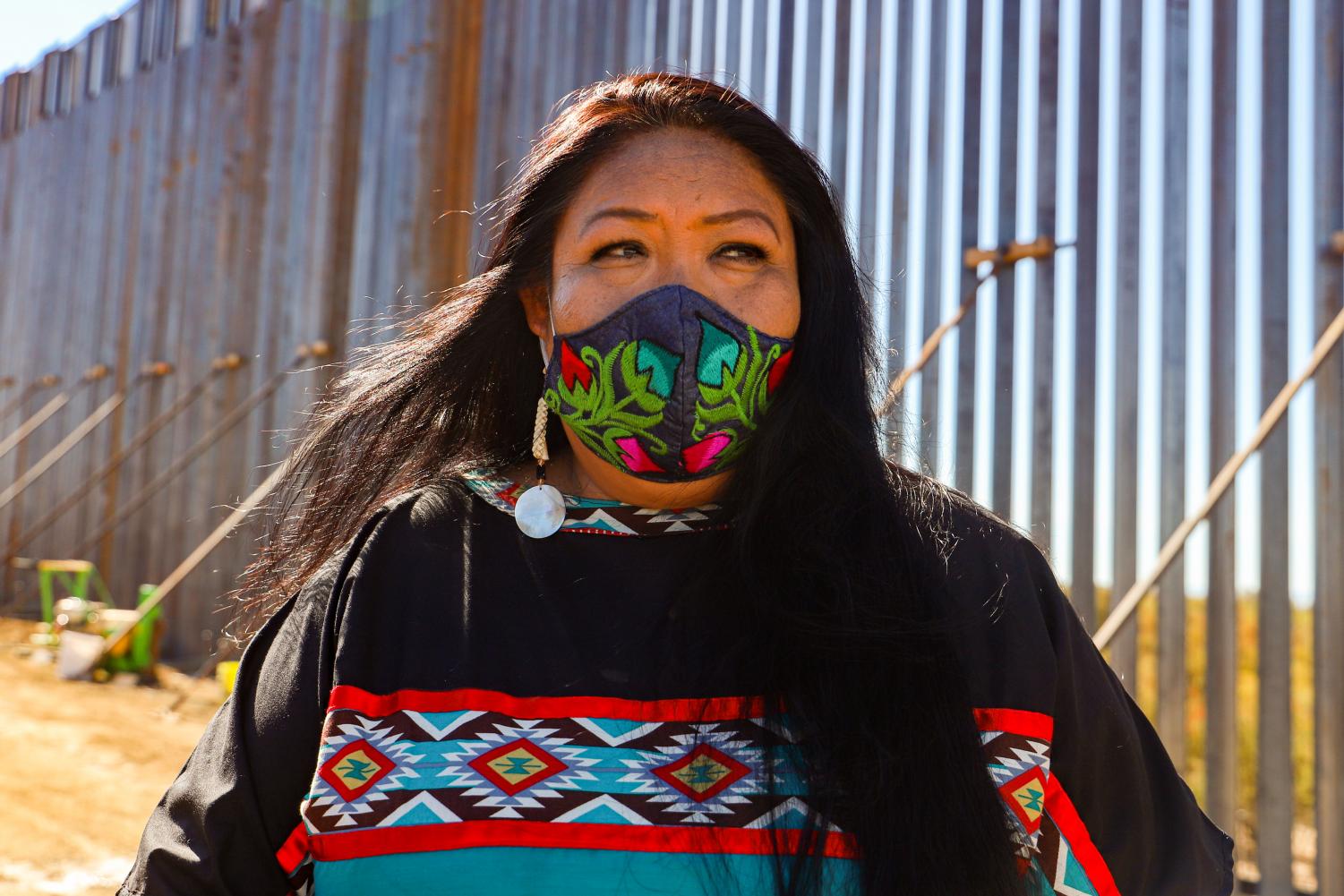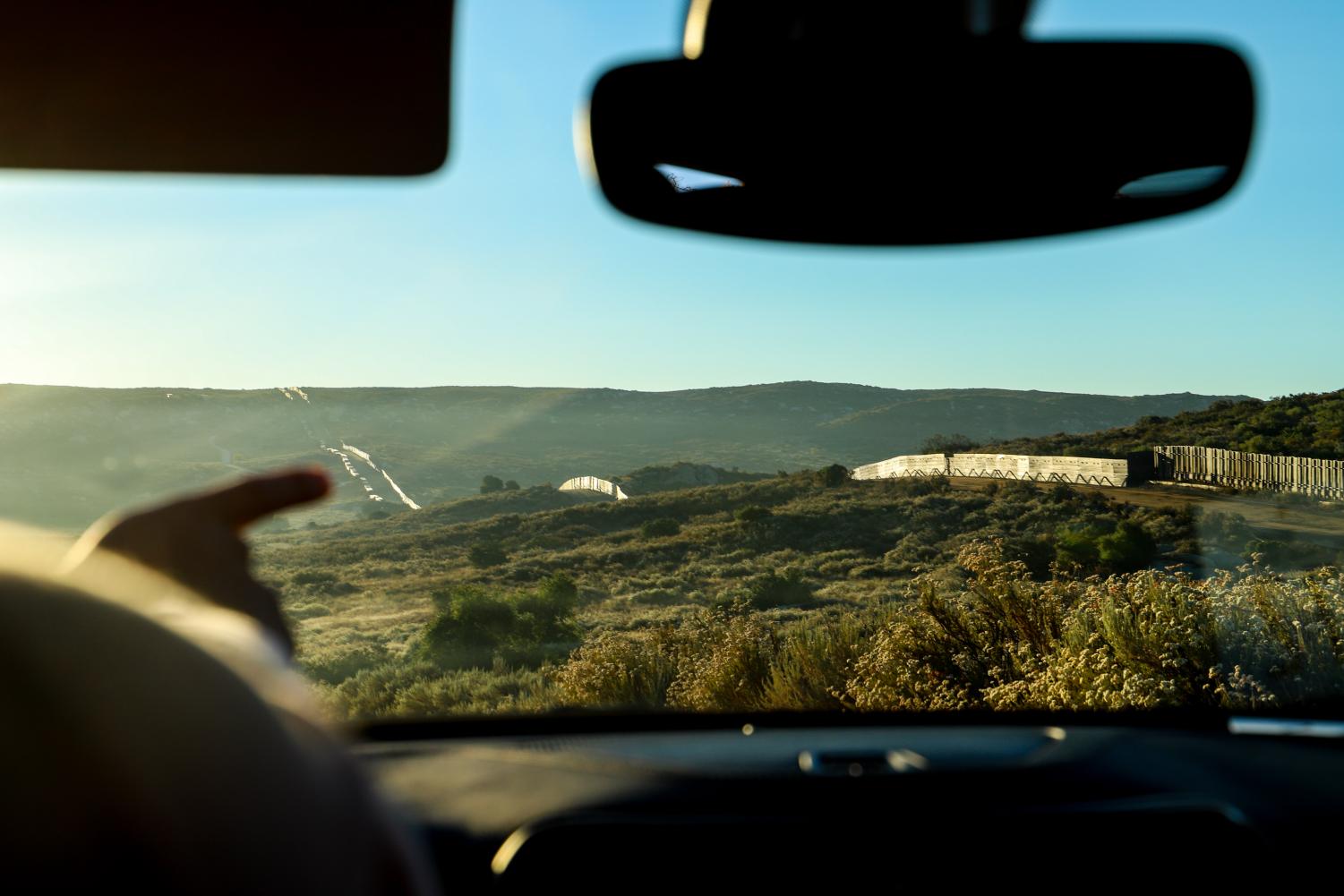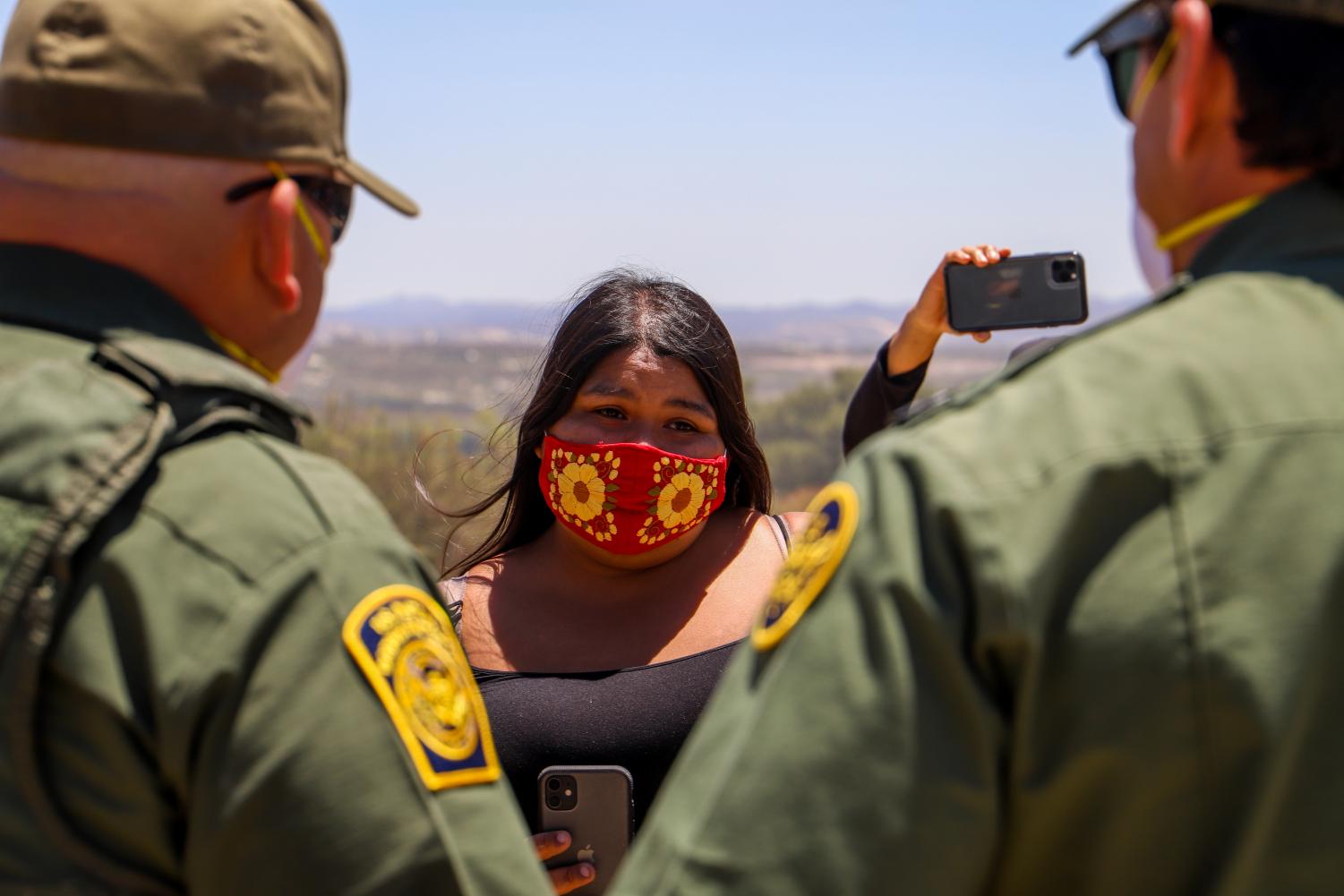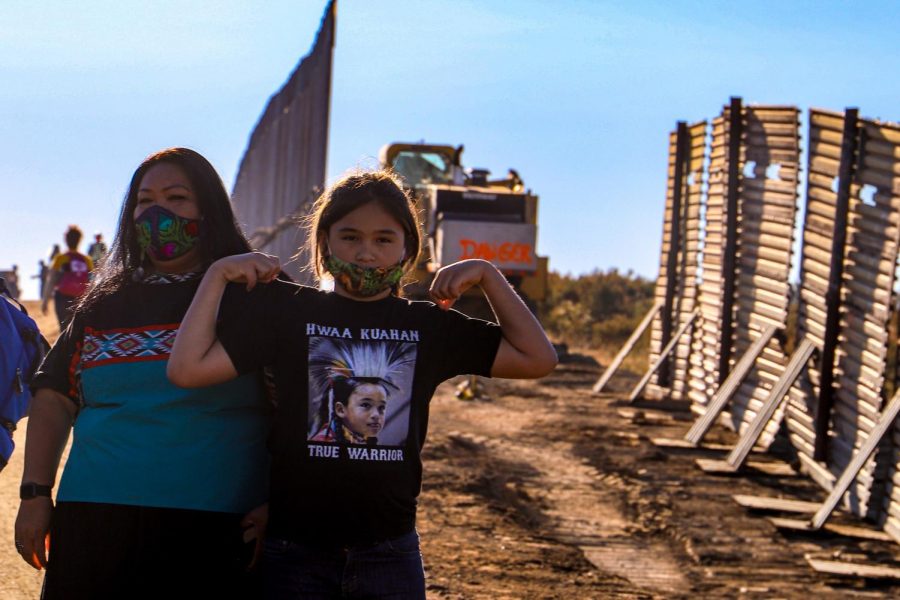
Kumeyaay Nation protests border wall construction
The wall runs through land that is sacred to the Kumeyaay Nation.
Jul 27, 2020

The dusty air at a segment of land between the U.S.-Mexico border near Campo Kumeyaay Nation Reservation was filled with singing, prayer, percussion and sage. On either side stood members of the Kumeyaay Nation, the native people of what is now Southern California and Baja. In the background, forklifts whirred and beeped, and sheets of metal clanged, effectively occluding the song of the Kumeyaay prayers. Though its people once lived freely from desert to sea, federal land assignments have left them with small portions of land and split the various bands of Kumeyaay across an international border.
Members of the Kumeyaay Nation are protesting to protect sacred ancestral land, which is being harmed by the construction of the U.S.-Mexico border wall.
The use of Native American land is protected through policies like the Native American Graves Protection and Repatriation Act and the National Environmental Policy Act– policies that Tribal Nations have fought hard for. However, the Trump administration has used the 2005 Real ID Act to justify the waiving of these protections, claiming they interfere with U.S. national security policy. The border wall was a major component of President Trump’s 2016 campaign.
Cynthia Parada is a council woman of the La Posta Band of Mission Indians. She said tribal members were not notified when the work was initiated, which is why they began protesting at the end of June.
“They were doing work with no Native American monitors, which ensures that our artifacts are safe. And then we’ve been demanding soil testing because in this area – down to the west there’s Camp Lockett, and in this whole area, we’ve found human remains before,” Parada said. “All this [construction] work started, and what we’re concerned about is them unearthing something. And they’ve been just ignoring us. We’ve been asking for consultation with their superiors– they haven’t done anything. So that’s why we’re out here every day slowing down this work, because we don’t want them working until our demands are met.”
The construction site spans around 16 miles, and many sections of the wall are in operation. Kumeyaay leadership meets daily before sunrise with supporting protestors to lead them through the backroads. When protestors arrive on scene the construction workers pack up and move. The protestors follow them, then split up and occupy multiple locations across the stretch under construction.
“We have different groups everywhere to try to shut the project down that whole day because they’ll just keep moving if they can,” Parada said.
Martha Rodriguez, of the San Jose de la Zorra Kumeyaay Community in Baja California, is a teacher of cultural practices at Kumeyaay Community College and is one of the protest leaders. Her 10-year-old son, Hwaa Kuahan, whose name translates to “true warrior,” was by her side throughout the day.

“I hope legally they can stop this. So they can do all of the required stuff we’re asking for,” Rodriguez said. “That’s why we’re doing what we’re doing over here trying to slow down this construction. So the attorneys can get it together in a legal way.”
The wall’s construction will also have environmental impacts across the U.S.-Mexico border. Jessica Chan, a climate scientist, is one of the many supporters who have been showing up for several days on behalf of the Kumeyaay people and said she wanted to support their defense of ancestral lands. She carried a sign that read “protect Kumeyaay land, culture, history.”
“I am a climate scientist and I do solidarity work with Indigenous communities in South America, Chile, Argentina and people who are fighting and struggling against groundwater extraction for and mining,” Chang said. “So a lot of the conversations and the work that I do within the environmental climate movement is talking about what that means from a really deep level – not just sort of transitioning technologies – but like what are the root causes.”
The root causes, Chang said, are a form of ongoing settler colonialism on “all of this land and the extractive colonial model that sustains the nation state.”
“This wall too, and all of the environmental problems that we have, they’re all very much connected to each other,” Chang said. “So, that’s part of it. But also is just standing with Indigenous communities who are protecting their lands and who’ve already had their land massively, not only stolen but downsized and trying to prevent further desecration.”
The access roads for construction have removed large swathes of natural flora that hold cultural importance for the Kumeyaay people, who have used the natural flora for crafts, tools and food for generations.

The border wall has seen many phases. The wall that currently occupies much of the border was created during the Clinton administration through “Operation Gatekeeper.” It sits above the ground, as opposed to in the ground and looks like crimped metal. Each day, construction workers move the older and temporary wall in the hopes of installing the new wall– one which is planted around 10 feet deep in the ground and filled with cement. As the sun rose higher into the sky and midday rolled around, the separate groups reconvened at a section of the border wall that, despite attempts by construction, was still open.
At the open segment, members of the Kumeyaay Nation from the Mexico side of the border convened with the leadership on the U.S. side. It was here they had a ceremony with each other in which they shared languages of their Tribes, song and prayer with each other while occupying an open stretch of the border wall. According to the University of San Diego, San Diego County has the most reservations in the country, but the border and the federal government’s displacement of tribal nations have kept members of the same tribe apart. When a U.S. Border Patrol (USBP) officer referred to those on the Mexico side of the U.S.-Mexico border as “those people,” Parada said “they’re our people, our family.”
Parada said that their ceremony consisted of both music and prayer. She said they are sung in specific orders and each with their own special meaning. It is also a way of sharing, she said. According to Parada, languages along with songs and prayers can get lost because of the ways in which Kumeyaay people have been separated by the border. When they convene like this, they can share what was lost from the colonialist construction.
Maura Sullivan, of the Chumash Tribe, came to support the Kumeyaay Nation on the U.S. side of the border.
“Hola familia, estoy aquí de mi nación – soy de la tierra de Chumash más norte de Los Angeles y somos aquí con ustedes, somos unidos,” Sullivan said.
Sullivan shared some words and songs in the Chumash language. Sullivan said the songs were “medicina para el corazón.

As prayer and song continued the border patrol grew increasingly present and involved. One Border Patrol officer by the last name of Mason joked among other officers that the Kumeyaay Tribe protestors had “all day to pray,” which was met with laughter. He then stepped close to the Kumeyaay leadership and told them the same thing.
“You had all day to pray, but you were busy playing cat and mouse with construction,” Mason said.
Daniel Rubio, who is the Border Patrol tribal liaison responsible for communicating with the Kumeyaay people and protestors in the area, said that he needed to close the open section of the wall due to safety and security concerns. He added that it “wasn’t personal.”
As Rubio asked organizers repeatedly to move amidst their ceremony, another protestor interjected that the officers wouldn’t interrupt or remove people praying in a church. Rubio responded by saying that it was different which protestors disagreed with. The leaders cleared the way for construction to move one of their construction vehicles. While the prayer and music continued, forklifts fired up and began to beep and blare as they put the sections of the old wall back in its place, shrinking the open gap and closing the physical space between tribal members again.
The Kumeyaay leaders on the ground said their biggest action is still to come and they will continue to be there every day until their demands are met.



